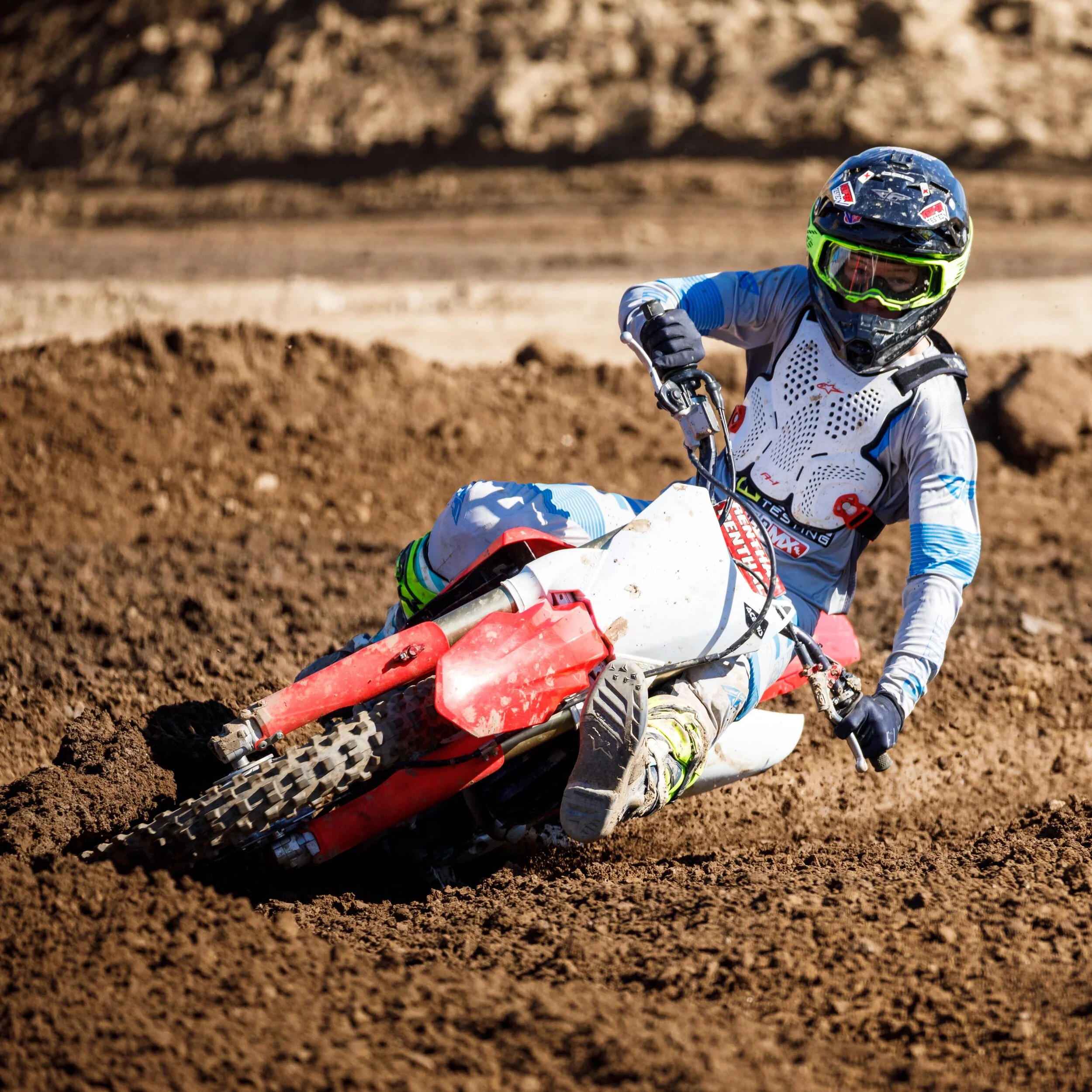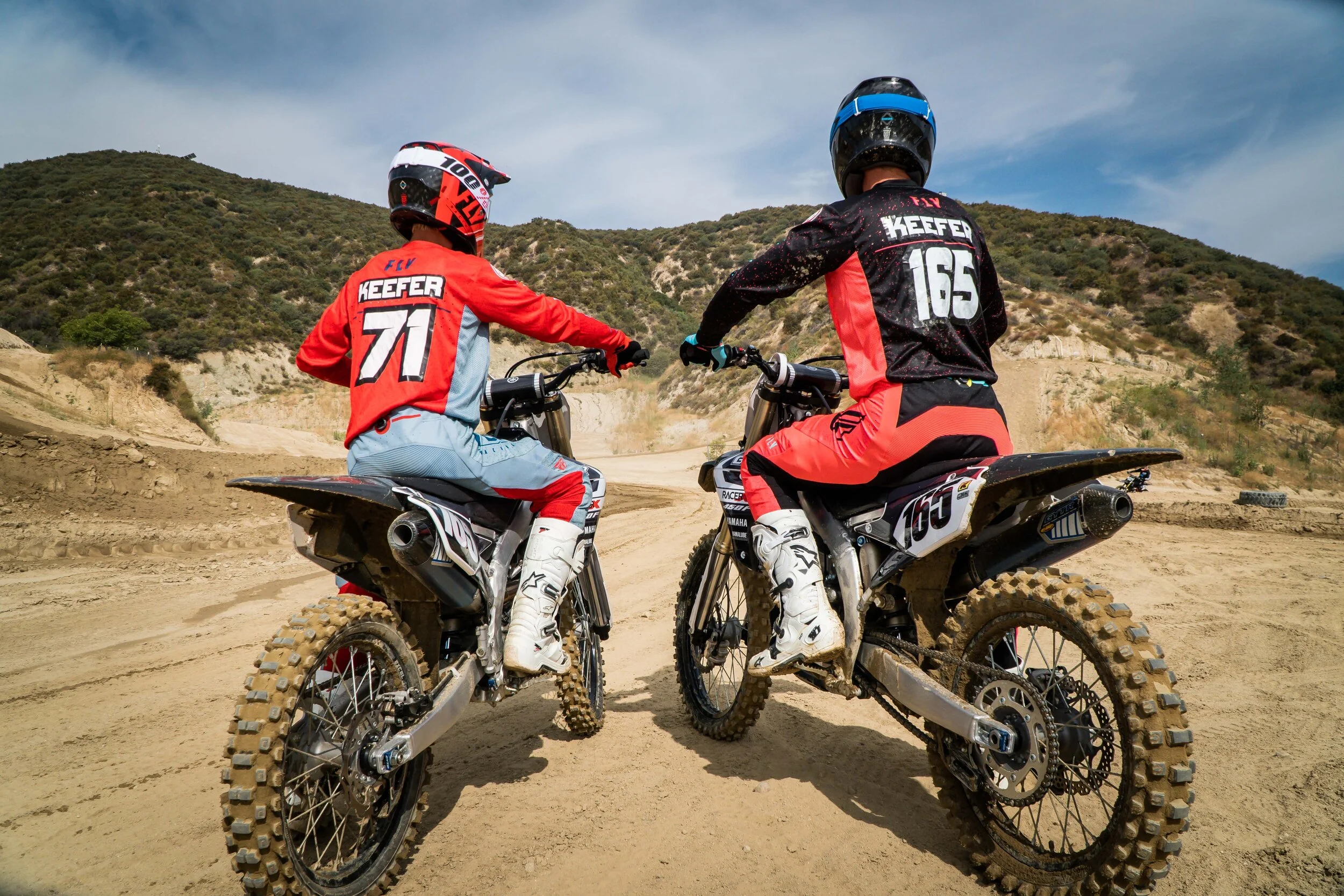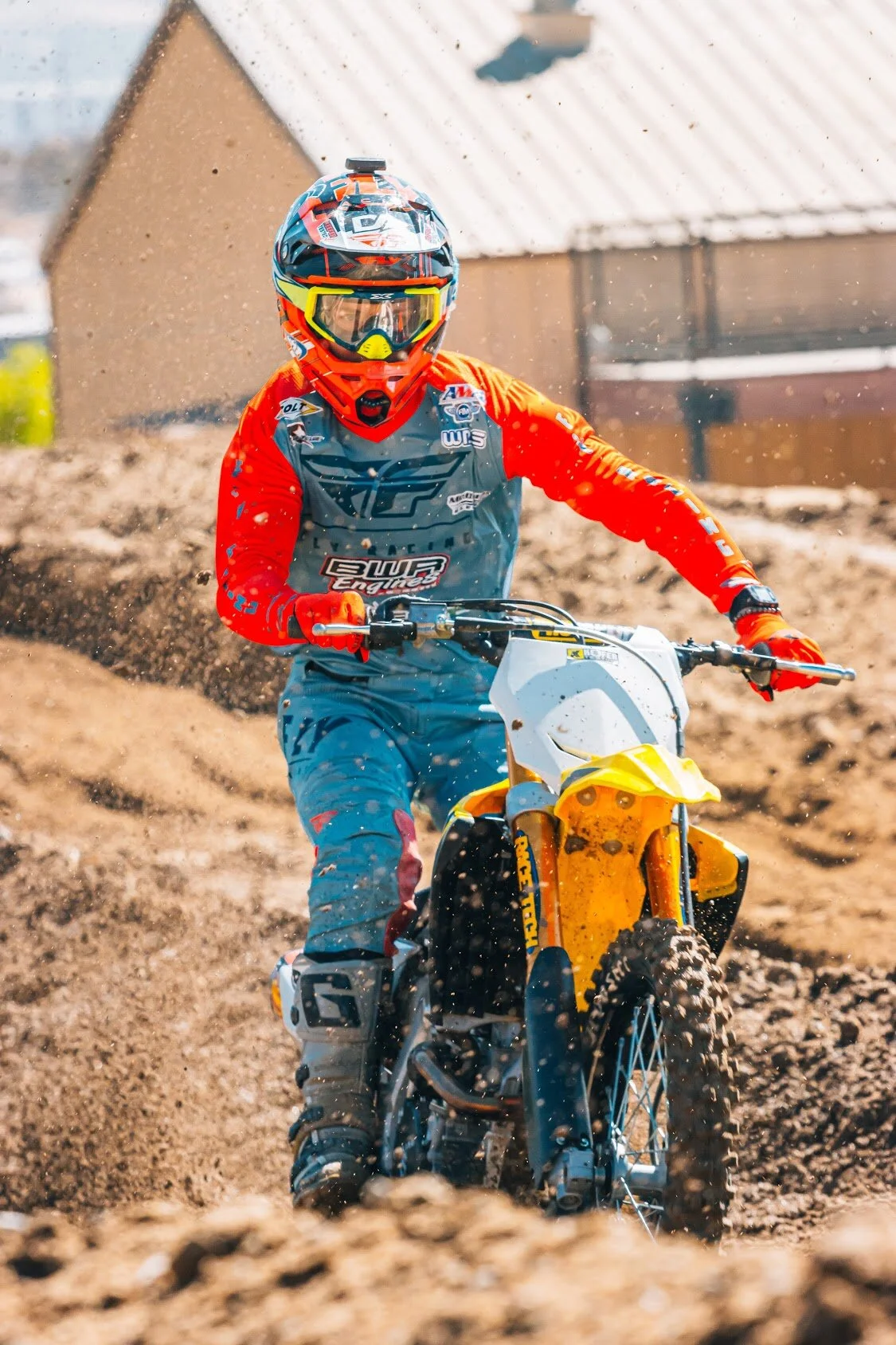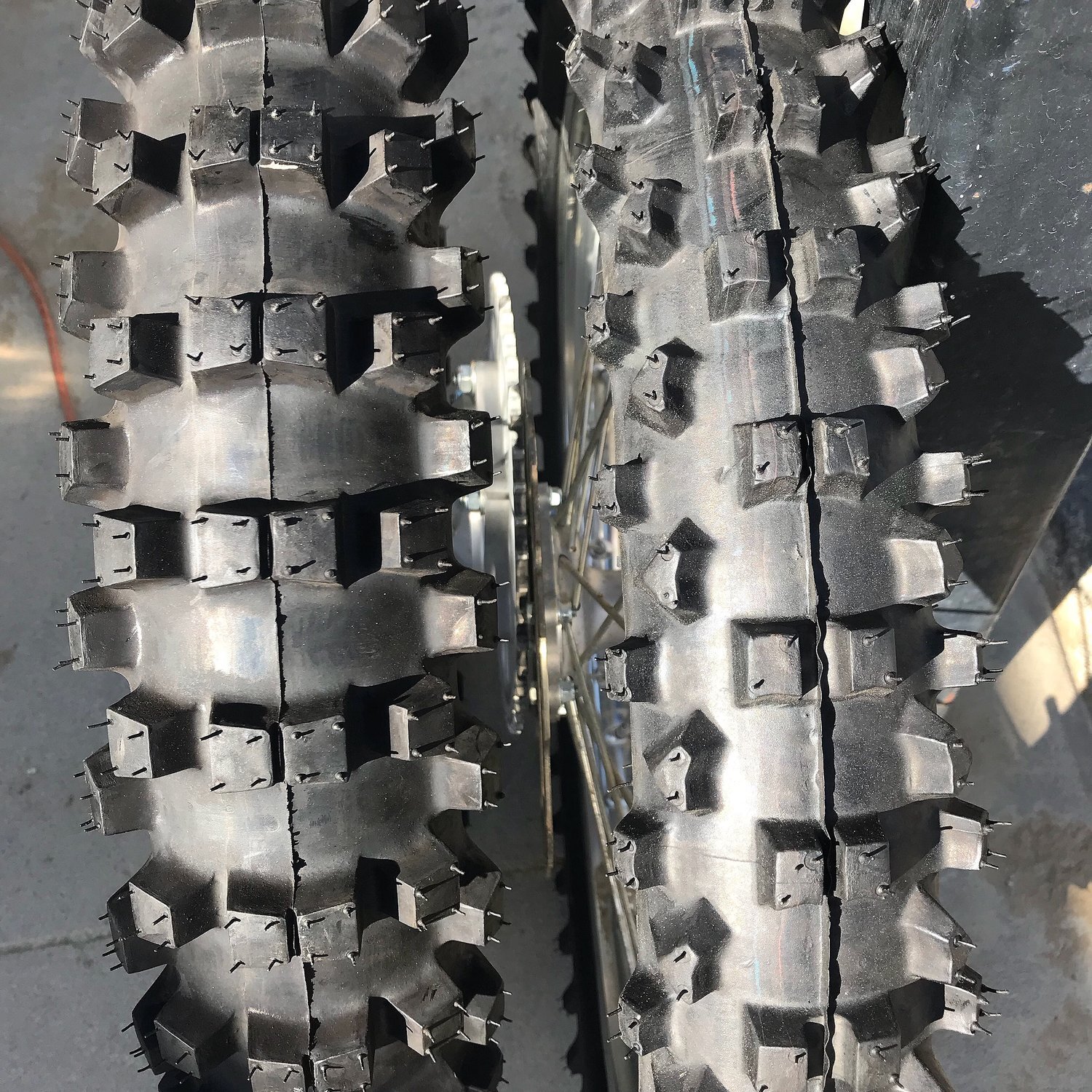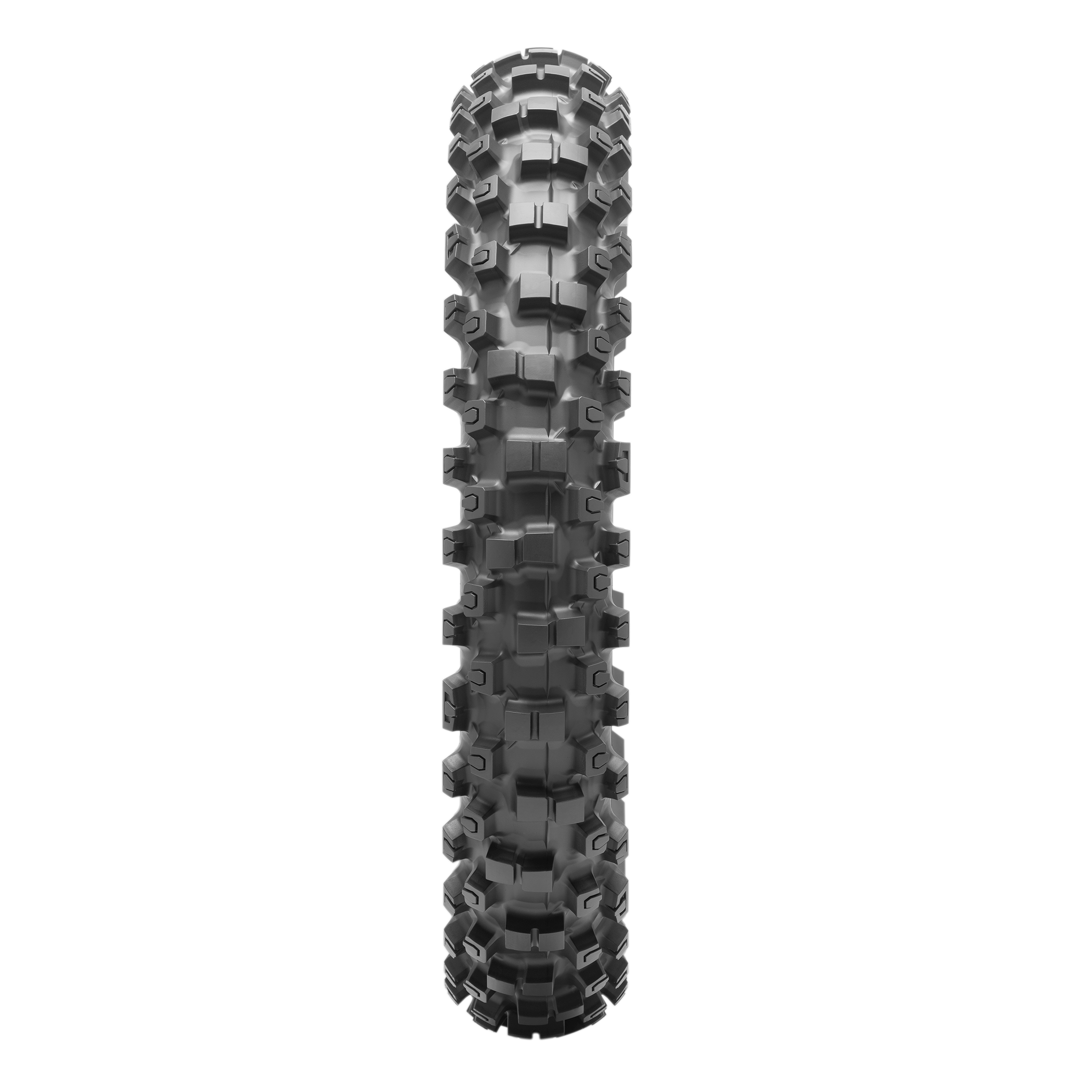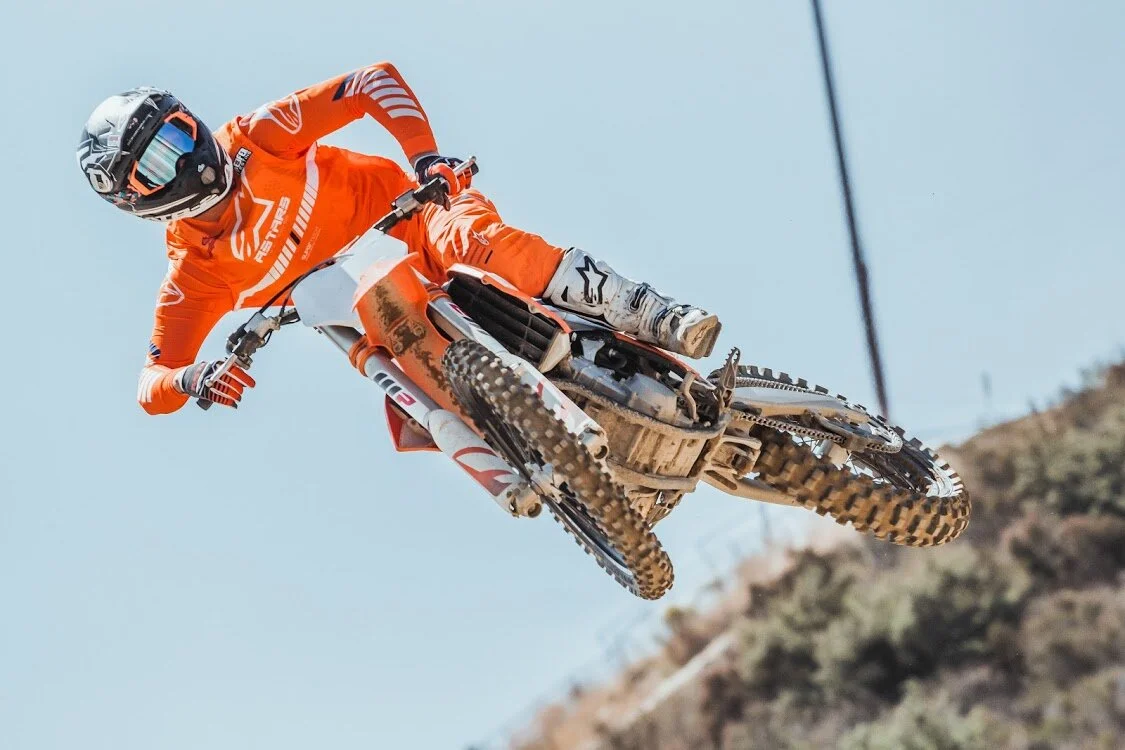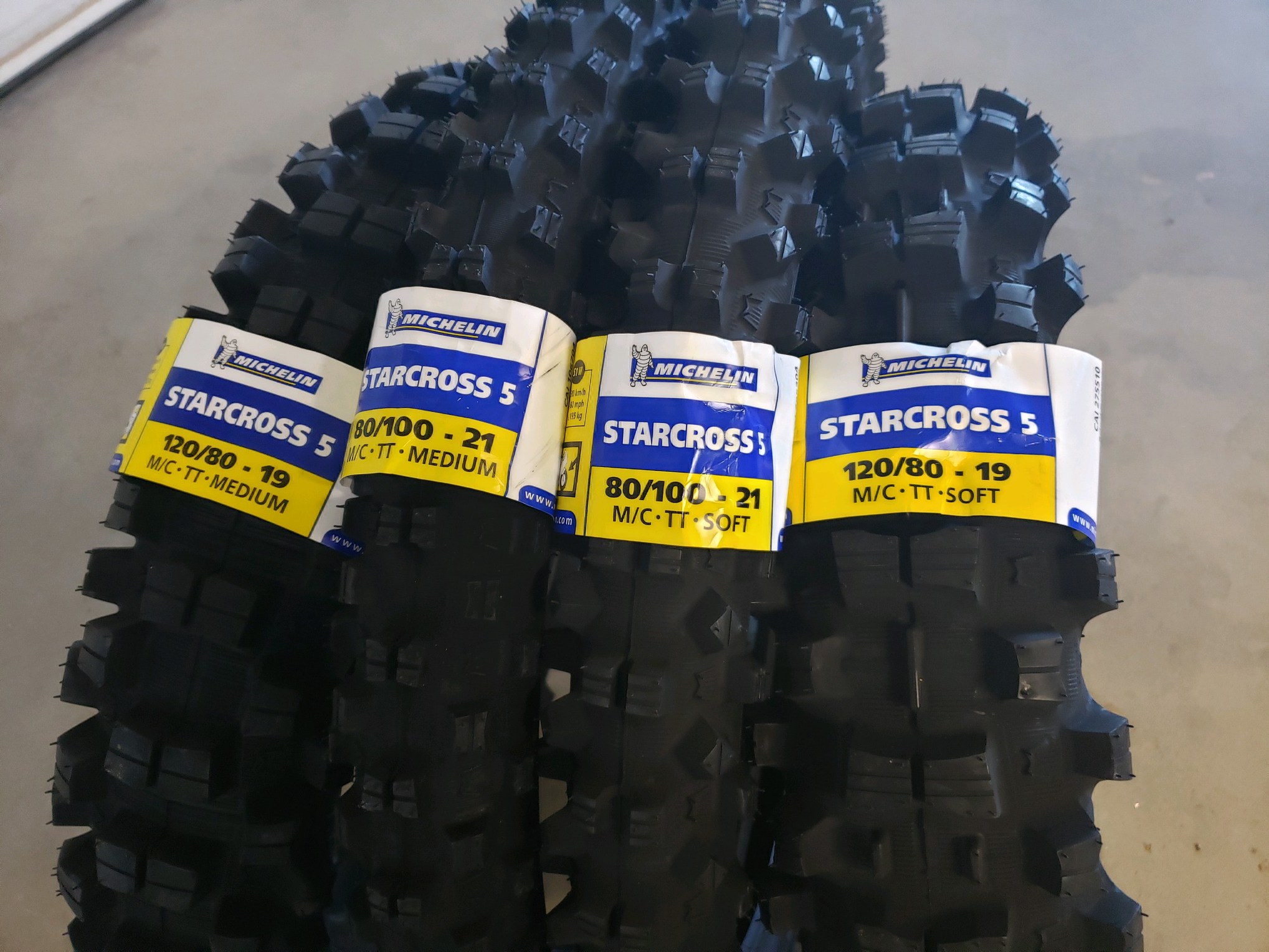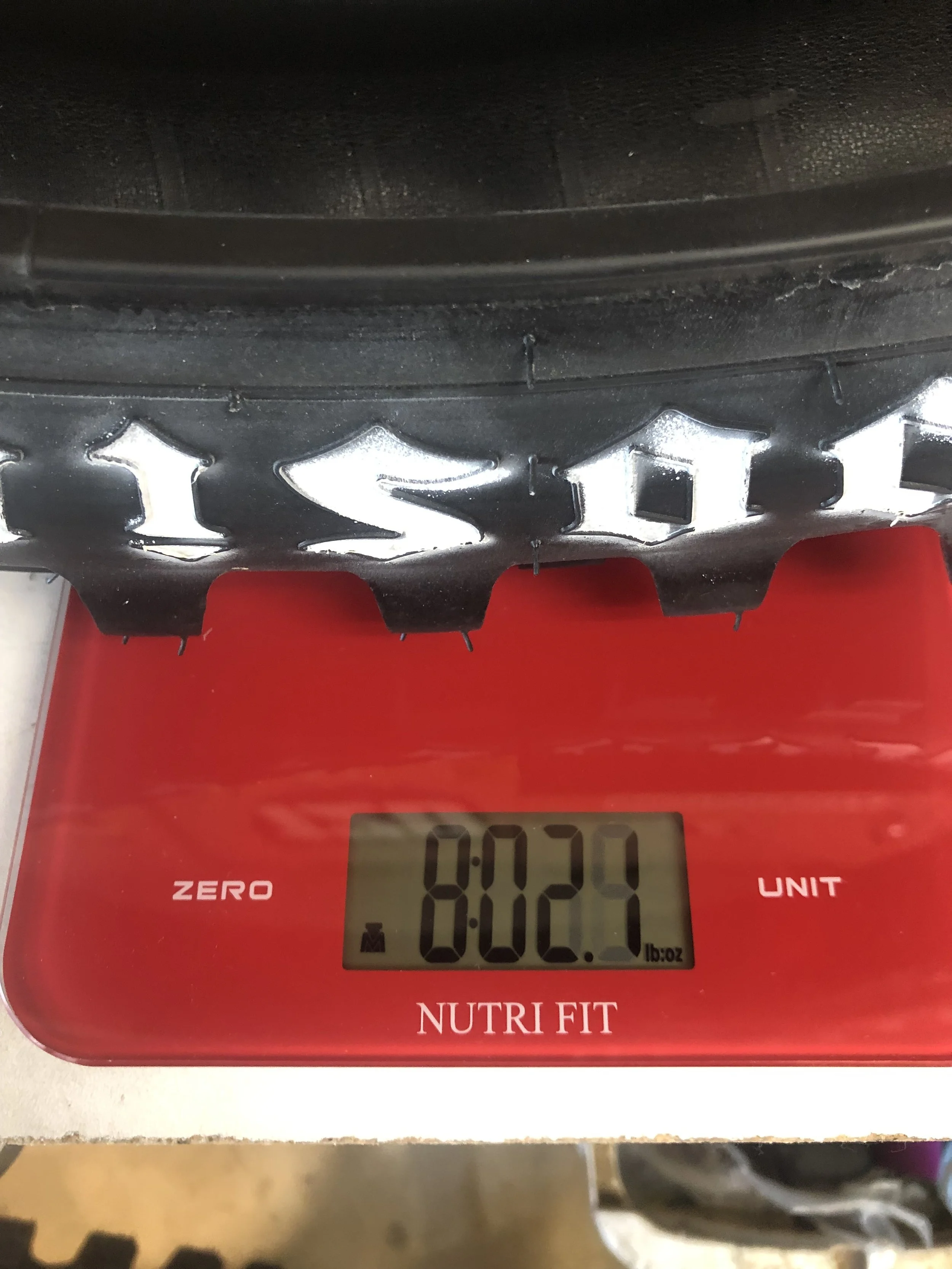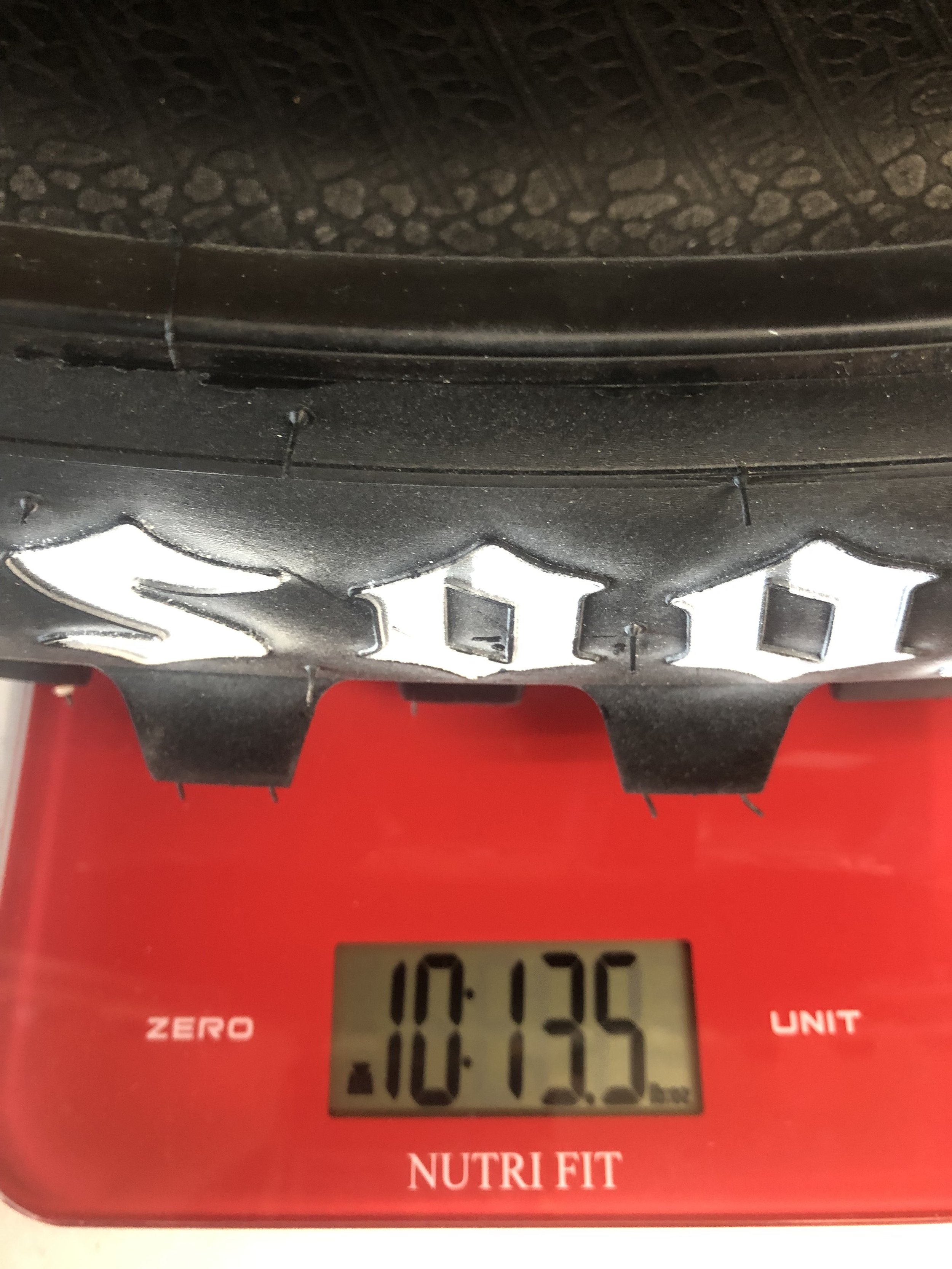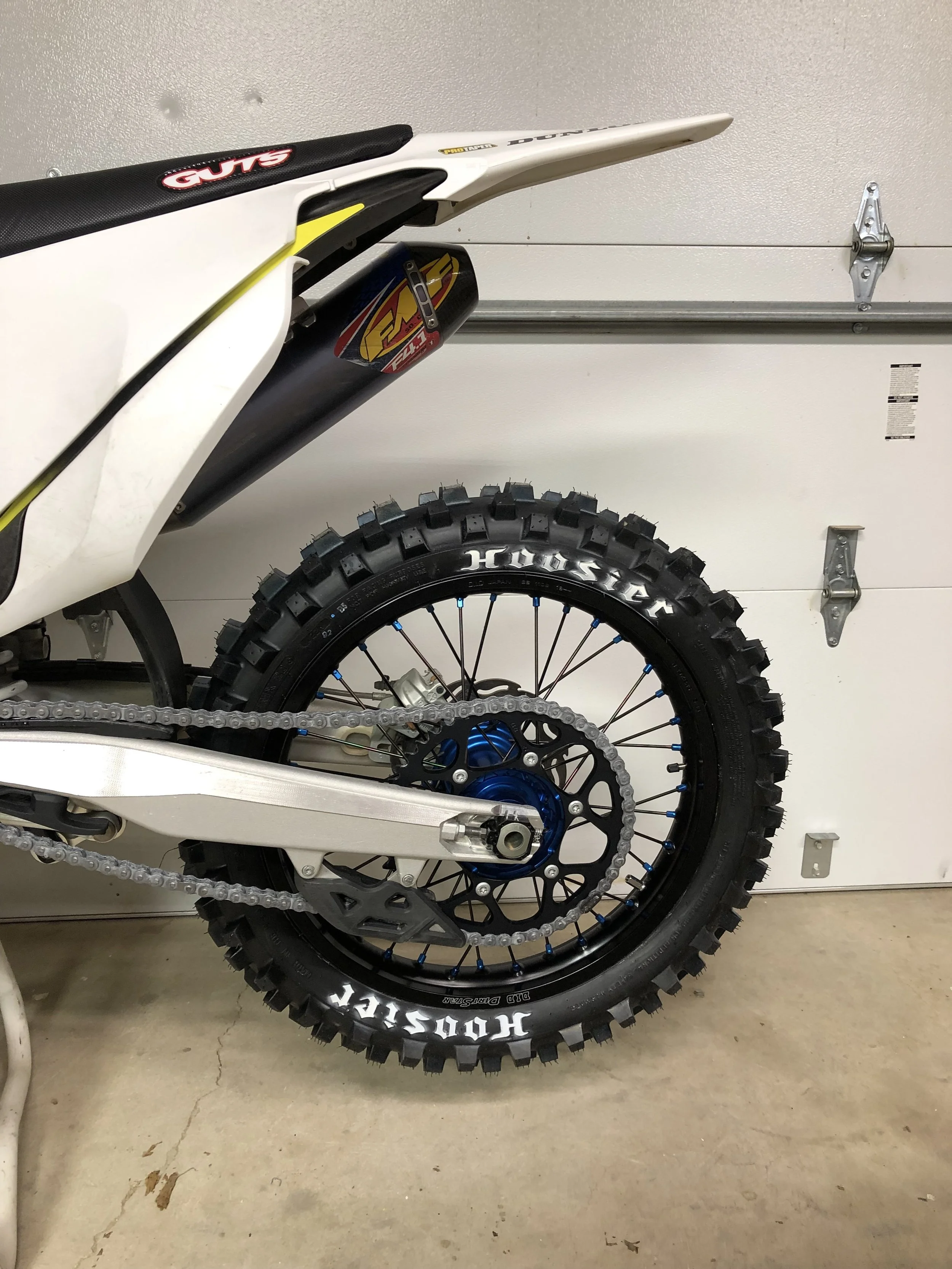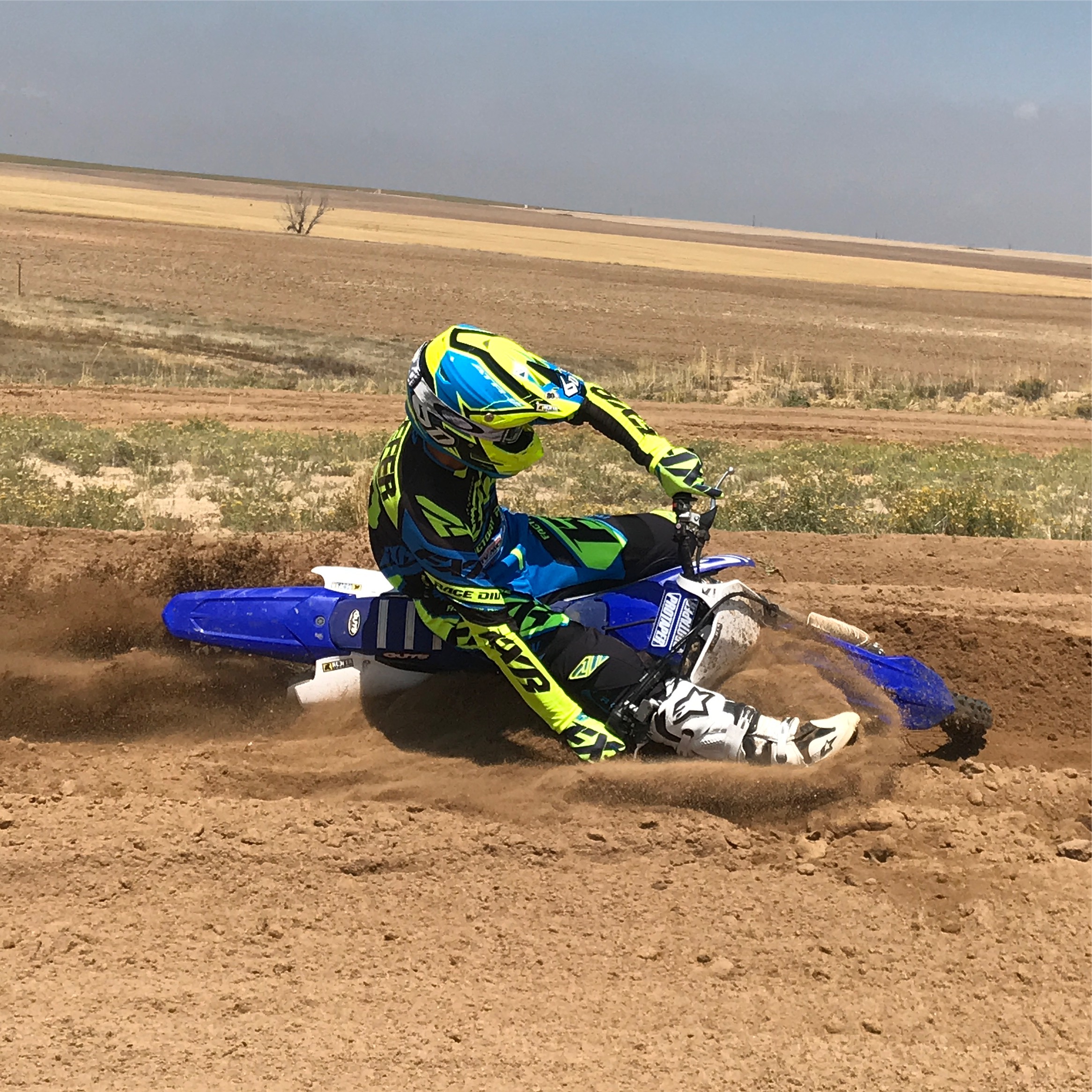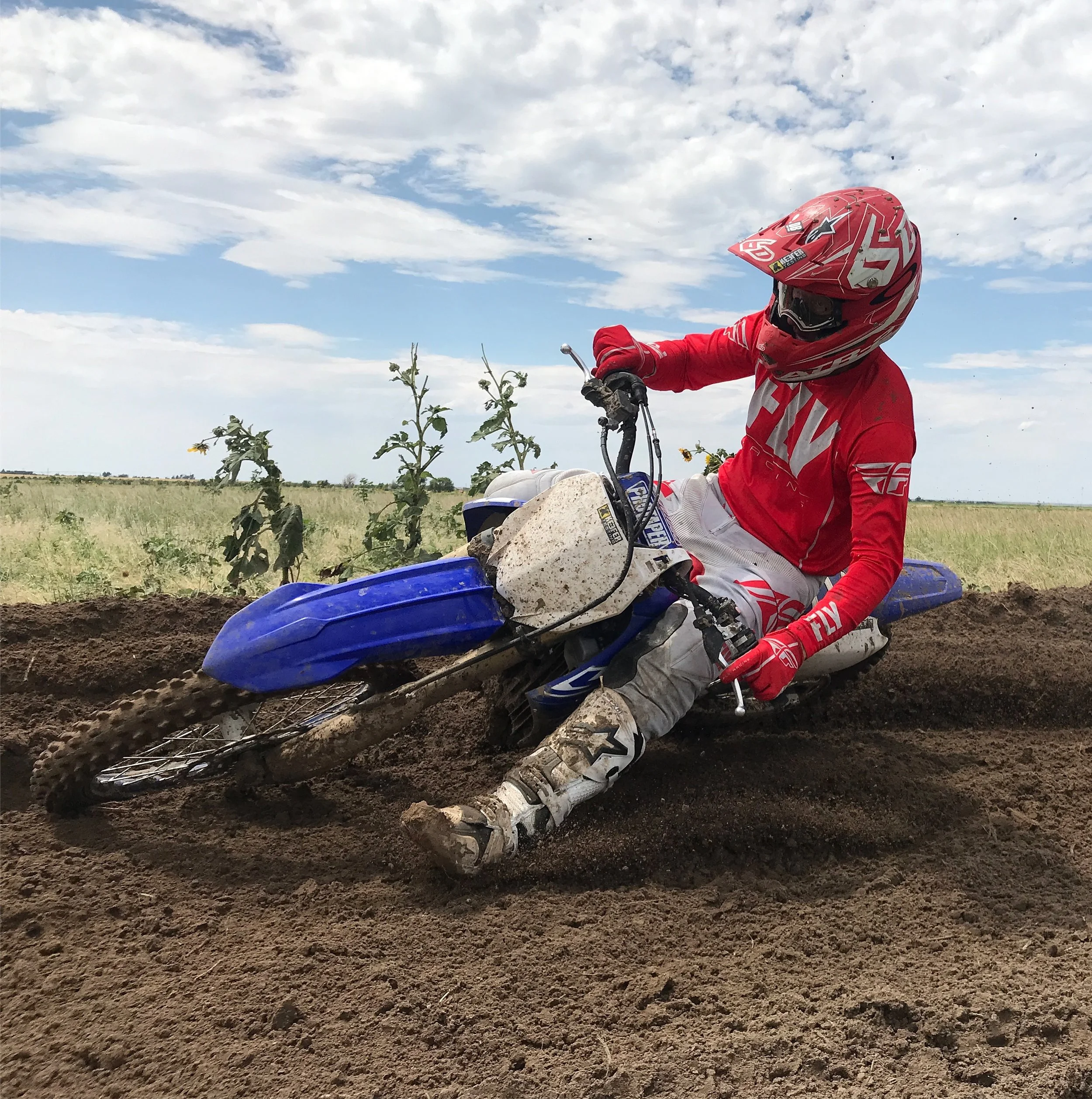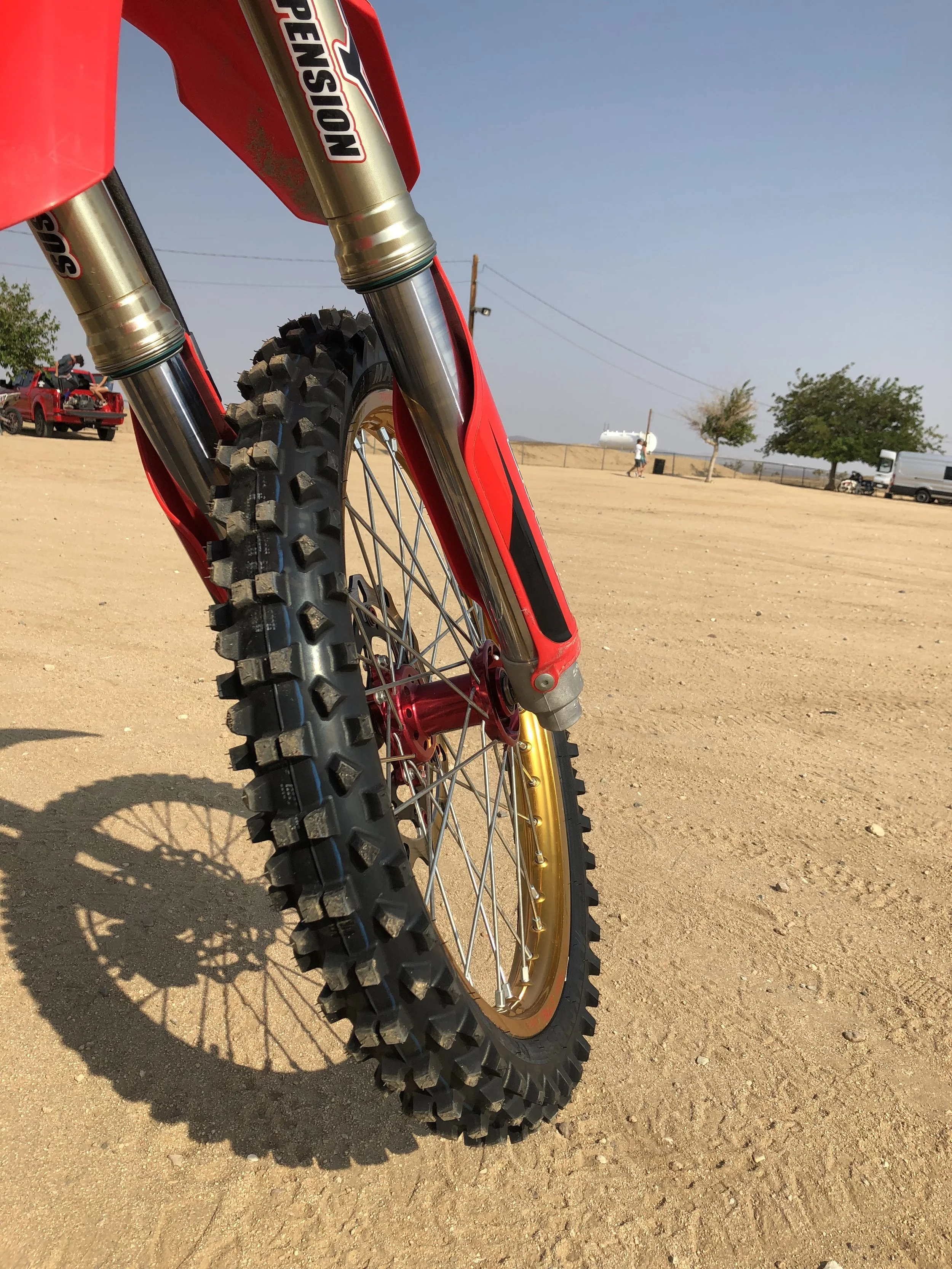To keep up with these ongoing “On My Own Dime” articles I thought it would be informative to write about a few of my favorite tires. I don’t use the same tires year round, because quite frankly some conditions/tracks suite different tires better. For example, I raced with a MX3S/33 combo at Loretta’s and then raced with the Pirelli MX32 mid-soft’s at the World Vet’s at Glen Helen.
I don’t always get free tires, so when I have to go purchase tires for Aden and my own personal bikes, these are the tires that I purchase. These are strictly performance based tires and are not meant to be the most durable tire out on the market. I normally am looking for performance out of my tires and not as much longevity, but I do want it to last more than a couple weekends of racing. Just know this… It is tough to weave performance as well as durability in a tire. You need to know what type of rider/consumer you are. Are you looking for the most traction out of your rubber? Or are you the type of rider that doesn’t need all the traction in the world and is just fine with a tire that last longer with a harder carcass. Below are my top picks of tires when looking to go racing.
Pirelli MX 32 Mid-Soft Front/Rear:
Pirelli may not be the most popular tire in the AMA Supercross/Motocross paddock, but one look around the MXGP circuit and you will see more Pirelli tires than any other brand. I tested the Pirelli MX32 MId-Soft back in early 2018, but since then, the MX32 Mid-Soft tires are said to have an improved spec and I have been circulating through them regularly o my test bikes. While I don’t have much information on what was improved or why (maybe a vendor change), I did get confirmation that all of the old MX32 Mid-Soft spec tires have been out of circulation for a while. This was a concern to me as I thought some may still be floating around, but I was reassured that if a consumer purchases any Pirelli MX32 Mid-Soft tires, you will in fact be getting the updated versions. Pirelli also noted that they have dropped their pricing down on all their motocross tires $5.00-$15.00.
Once out on the track I quickly found out that one of the first things that impressed me the most was that the Pirelli Scorpion MX32 Mid Soft’s carcass gives the rider a blend of comfort and control on choppy/square edge terrain. I have more time on Dunlops than any other brand of tire around these Southern California test track, so I am very familiar on what these test bikes feel like when they get rough. When the track does get rougher, the Pirelli MX 32 Mid-Soft rear tire (120/80-19) gives more cushion than the Dunlop I have been riding on lately. The Pirelli carcass acts like another piece of your bike’s suspension and can really help a rigid feeling chassis become slightly better on choppy terrain. It impressed me so much that I tried it on a 2020-2021 Honda CRF450R and it gave me less of a harsh feel. To me that was impressive on this machine, because the Honda needs more comfort and the MX32’s carcass did just that.
Pirelli also offers a 120/90-19 size rear tire as well that was even better on square edge cushion feel, but the 120/90-19 also puts more weight on the front end of the machine, which increases front-end steering, but negatively affects the ride height. If you do decide to go with the 120/90-19 and feel like your rear end is too high after installation, I do recommend dropping your sag 1-2mm to prevent a high feeling rear end on de-cel (stink bug).
The Pirelli MX32 Mid-Soft rear tire offers great traction on soft/intermediate terrain through ruts and coming out of soft corners. The MX32 works well under lean angle and that lean angle traction is one of Pirelli’s rear tire strong suits, as the rider is able to get on the throttle sooner (while leaning) without washing out. The contact patch that I get with a Pirelli at Glen Helen is unmatched. I feel like my lean angle is more controlled and that sudden line changes are easier with the Pirelli. When riding you want the largest “feeling” contact patchiest you can find from a tire and Pirelli has done this well with the MX 32 Mid-Soft.
Not only do you have a more controlled lean angle, but you are also able to start your lean sooner (compared to a MX33). Braking predictability gives the rider confidence to pivot and throttle out of flat corners without much hesitation. If you’re a predominately front end steering rider the Scorpion MX32 rear tire will provide you with less sliding ability and let you steer with the front tire more than the rear. If you're a rear end steering rider that likes to drift the back end around, this tire may not suit you as much as a Dunlop MX33. The only complaint I had is when the track surface was on the harder side, I could feel the side of the tire carcass roll when accelerating from flat corners. This gives me a pushing or loose feeling rear end that caused me to be less aggressive with my throttle hand. To combat some of this it’s very important to run the correct air pressure (between 14-14.5 psi) for the Pirelli’s softer style carcass. I noticed that when the Pirelli tire gets half worn, the performance isn't as good as the Dunlop if you don't pay attention to the tire pressure. When the tire gets worn, going to 14.5-15 psi helps the structure of the carcass stay firmer on its sidewall when under lean angle.
I ran 14 psi on a half worn rear Pirelli and it felt very “washy” or vague so going up to 14.5 psi helped this roll sensation. Remember that just because the actual knobby might not be worn down that doesn’t mean the integrity of the caracass isn’t worn. Chunking wasn't an issue with the set of Pirelli’s I had, as I got well over 10 hours on a rear tire. You will also have to understand that Southern California conditions are much harder than east coast conditions, so lifespan would most likely be better in softer east coast based dirt.
I am a picky son of a bitch when it comes to front tires! The Pirelli MX32 front tire is great for front-end feel and lean angle traction especially in heavy dirt. The softer the dirt the more responsive this front tire is. I prefer a tire that really digs into the dirt and lets you carve underneath blown out berms or ruts (happens a lot here in Southern California). The Scorpion MX32 Mid-Soft front tire actually makes the steering feel heavy at times because the tire is at maximum grip under initial lean in corners. Like I mentioned above, the MX32 is tailor made for a front wheel steering rider and can be leaned into corners earlier than you would come to expect. It took me a couple rides to fully trust this tire, but it has treated me well once I began trust it more. The only other front tire that has as much front end lean angle traction is a Hoosier MX25. This Pirelli front tire does suffer from predictability when the track is freshly watered while broken in/slick on top (think 1PM at your local track). The MX32 would give the front end a vague/push feel as the bike would have a tendency to slide unexpectedly through flat corners. Again, adjusting the air pressure can remedy some of this, so going up to 14.5 psi helps the tire not to roll so much.
To me this is a pure soft natured front tire and if the conditions are soft to loamy this tire works great, but if the track gets hard pack, you will get some uncertainty when pushing the front tire’s limits with 13.5 psi. The wear of the MX32 front tire is adequate and unlike most soft terrain tires, the Pirelli will NOT chunk from what I experienced. I typically get 9-11 hours on a MX32 front tire before I start to see some of the performance life start to dissipate. This is a performance based tire and should be purchased knowing this. 14 psi is a good baseline for this tire, but be sure to check the pressure after a couple motos. Tire pressure will rise with heat so make sure to have a good tire pressure gauge handy in the tool box.
The updated Pirelli Scorpion MX32 Mid Soft is one of my favorite sets of tires to put on for Southern California tracks. The Pirelli tires will require more attention during the course of the day with your tire pressure gauge, but if you stay on top of the air pressure, you will be rewarded with a tire that rivals spec tire cushion feel.
Dunlop MX3S Front Tire:
The MX3S directional front tire is great for front-end feel and lean angle traction, especially over the older MX33 front tire in all conditions. The MX3S front tire actually makes the steering feel “heavy” at times because the tire is at maximum grip under initial lean in corners. It can be somewhat grabby if you're not used to it and can cause some oversteer, but once used to the lean angle feel the MX3S becomes magical in soft to loamy conditions. The MX3S is tailor made for a front wheel steering rider and can be leaned into corners earlier than most other tires very easily. The only other front tire that has as much, if not more front end lean angle traction is a Pirelli MX32 mid-soft. I did have a problem with the MX3S when the track had just been freshly watered and was slick on top (think of the second moto at a Glen Helen-type track). This would give the front end a vague feel (un-predictable) as the bike would have a tendency to push the front-end through flat corners (the MX53 is better in these types of conditions). The wear of the MX3S front tire is not as friendly in hard pack terrain as you can feel the side knobs roll on the hard pack surfaces. The vague/pushing sensation is common once on hard pack so you may want to stick with more of an intermediate to hard terrain tire if your local track has a hard base. Again, just like a performance tire, the side knobs can chunk off rather quickly if you’re riding on intermediate terrain often. I typically get 7-10 hours on a MX3S front tire before I start to see chunking of the side knobs. This is a performance based tire and should be looked at accordingly.
Bridgestone M59 Front Tire:
The Bridgestone M59 tire has been in production for quite sometime, but for some weird reason I must have missed it while it was in circulation. I have tested the Battlecross tires, but never even knew about the M59 until Aaron Clout (Luke Clout’s brother spoke about it). Installing the Bridgestone M59 was the easiest tire I have literally ever put on. It has a soft carcass and the bead went into the rim nicely without any fuss. Once on the track, I knew I had to experiment with air pressure because I could feel the side of the M59 roll when pushing heavy into ruts (similar to the Pirelli). I started out with 13.5 psi, but finally settled on 14.5 psi as a setting that I would recommend when riding with this tire on a 450. The 450 comes with more weight and that means more roll of this soft sidewall when you’re pushing into corners. If you want to sacrifice some of that carcass cushion on square edge you could go up to 15 psi and get some added control on lean angle. The M59 wasn’t quite as good as the Pirelli on lean, but it did mimic the MX32’s comfort if there was some chop inside of ruts. I could feel more cushion through the front end and that gave my 43 year old hands a welcome sigh of relief.
Once I decided that 14 psi was the happy medium, I still felt the lean angle traction that I got wasn’t quite as good as the Pirelli MX32 Mid Soft. I could set up for ruts or berms on terrain that varied from loamy to semi hard pack without getting a push or vague feel, similar to the Pirelli, but I could still feel the sidewall’s inconsistency with the Bridgestone when I tried to pivot on flat corners. With the weight of the 450 and the aggressive nature of my front end steering style, the Bridgestone just wasn’t a fan of being leaned over with nothing to bank off of. The overall straight line bump absorption of this front tire wasn’t quite as good as a Pirelli MX32 Mid Soft, but was better than a Dunlop MX3S. It almost felt like the side wall had a different softer flex character and the middle of the M59’s tire was made of some harder/different type of rubber compound. The Bridgestone did suffer from some slip in corners if it was freshly watered, as I couldn’t quite be as aggressive in that area like I could with the Dunlop MX3S.
What’s odd to me is when I tested the same tire on a 250F, I got a completely different feel. The front end could be loaded and pivoted without getting a push or a vague feel. The straight line bump absorption was about the same as on the 450, but the lean angle traction was much better. I think this has something directly due to the M59’s carcass and how much of a load it can handle on lean angle. I don’t know what Bridgestone’s target was when making this front tire, but to me this M59 is tailor made for 14 psi on a 250F or smaller machine and maybe 14.5 on a heavier 450. I rode just as aggressive on the 250F as I did on the 450 and it had a consistent lean angle feel. I also feel like this could be a great off-road tire, especially if you ride a ton of rocks. The carcass feeling of the M59 could be a welcome feeling in extreme off-road conditions.
What About The Dunlop MX33 Rear?
Yes, I do like the Dunlop MX33 rear tire way more than I do the 33 front, so when I go to a 3S front, I usually match it up with a 33 rear. The 33 rear is heavier than the Pirelli MX32 mid-soft and the carcass isn’t quite as comfortable as the 32, but the Dunlop MX33 rear does give you a solid/non-roll type of feel when under lean while accelerating. I also like that the 33 rear feels like it has more traction than the Pirelli when worn down. I run the 33 rear at 12.5 psi because the carcass is stiffer and that seems to get me the best forward bite. I normally get around 10-12 hours of life from this tire around Southern California, depending on track conditions.


